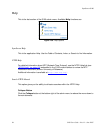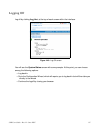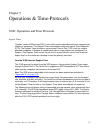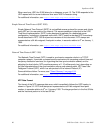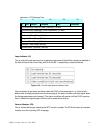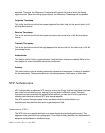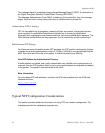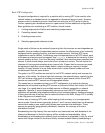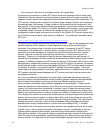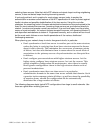92 S100 User Guide – Rev. D – June 2005
SyncServer S100
Mode
This is a three-bit integer indicating the mode. The S100 can be operated in any mode.
Stratum
This is an eight-bit integer indicating the stratum level of the local clock. For the S100 this
field is set to one indicating a primary reference, if the S100 is relying on its GPS receiver or
dial-up modem connection for timing information. Otherwise, it will accurately reflect its
location in a timing hierarchy.
Poll Interval
This is an eight-bit signed integer indicating the maximum interval between successive
messages, in seconds to the nearest power of two. The S100 will return the poll interval from
the incoming NTP message.
Precision
This is an eight-bit signed integer indicating the precision of the local clock, in seconds to the
nearest power of two. For the S100 this field is set to –19 (minus nineteen), which is the value
closest to the 1u sec precision of the S100 when operating in GPS mode.
Synchronizing Distance (Root Distance Version 3)
This is a 32-bit fixed-point number indicating the estimated round-trip delay to the primary
synchronizing source, in seconds with fraction point between bits 15 and 16. Set to zero in
the S100 for GPS mode and a corresponding value when operating with another time source.
Synchronizing Dispersion (Root Dispersion Version 3)
Synchronizing Dispersion is a 32 bit fixed-point number indicating the estimated dispersion to
the primary synchronizing source, in seconds. Root Dispersion indicates the maximum error
relative to the primary reference source.
Reference Clock Identifier
This is a 32-bit code identifying the particular reference clock. In the case of Stratum 1
(primary reference), this is a four-octet, left justified, zero-padded ASCII string. For the S100
the four-octet string is dependent on the time source selected, ‘GPS’ for GPS and ‘FREE’ for
Free Running Clock. If the unit is synchronizing to another S100, the reference clock identifier
will contain the four-byte address of the selected S100.
Reference Timestamp
This is the local time at which the local clock was last set or corrected, in 64-bit timestamp
format. With the S100, the Reference Timestamp is the last time that a valid timing signal was



